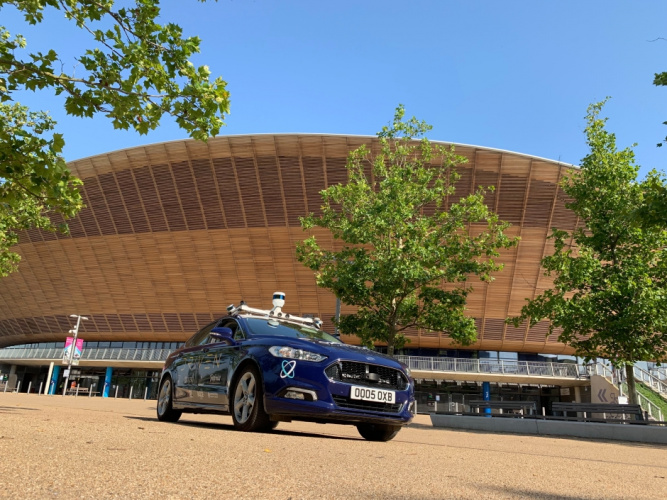
A fleet of Ford Mondeos, driven by autonomous software developed by Oxbotica, gave a week-long demonstration around a circuit in Stratford in east London earlier in the autumn.
Over 450 trips were made carrying local residents and members of the general public, driving on congested roads around the Queen Elizabeth Park, Stratford centre and Stratford International rail station, continuing through torrential rain at times.
New test method could accelerate UK driverless car adoption
Driverless cars learn from humans in Greenwich project
The cars operated completely autonomously, with a safety driver to take control if necessary.
The £13.6m 30-month project, match-funded by the government’s Industrial Strategy Challenge Fund, has brought together a wide range of partners to cover the entire autonomous vehicle ‘ecosystem’. This includes experts in local authority planning, insurance, cyber security and data trading.
Prof Paul Newman, co-founder of Oxbotica, said the trial demonstrated the system’s ability to work on typical London roads.
Prof Newman stressed that the Oxbotica system is “totally infrastructure-free” needing no roadside beacons, GPS or third-party maps. This means it can operate through tight urban canyons where there is no GPS coverage.
The vehicles use an internal model of the route to confirm its location, which is updated dynamically as the vehicle drives around, for example, to take account of road works, and navigates using vision sensors, radar and lidar.
Simultaneously, autonomous vehicles were being demonstrated in a quarry and a forest, using the same software.
The DRIVEN consortium said the London trial “confirms that autonomous vehicles can operate smoothly, safely and legally in complex real-life situations, on typical public roads”.
Oxbotica is also working with Addison Lee to introduce 15 autonomous taxis to London from 2021.




Poll: Should the UK’s railways be renationalised?
I think that a network inclusive of the vehicles on it would make sense. However it remains to be seen if there is any plan for it to be for the...